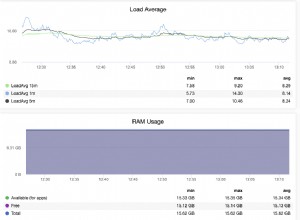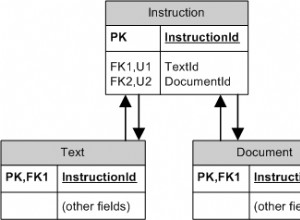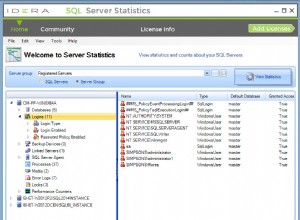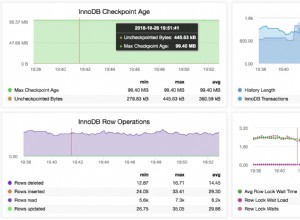Możesz to zrobić za pomocą DBMS_SQL , ale to nie jest ładne.
Tabela i przykładowe dane (KOLUMN1 ma liczby od 1 do 10):
create table table1(column1 number, column2 date, column3 varchar2(1000), column4 clob);
insert into table1
select level, sysdate, level, level from dual connect by level <= 10;
commit;
Pakiet z procedurą, która otwiera kursor referencyjny i zaznacza wszystko:
create or replace package test_pkg is
type cur_Table1 is ref cursor return table1%rowtype;
procedure sp1(p_cursor in out cur_table1);
end;
/
create or replace package body test_pkg is
procedure sp1(p_cursor in out cur_table1) is
begin
open p_cursor for select column1, column2, column3, column4 from table1;
end;
end;
/
Blok PL/SQL, który odczytuje dane z kolumny COLUMN1 z kursora referencyjnego:
--Basic steps are: call procedure, convert cursor, describe and find columns,
--then fetch rows and retrieve column values.
--
--Each possible data type for COLUMN1 needs to be added here.
--Currently only NUMBER is supported.
declare
v_cursor sys_refcursor;
v_cursor_number number;
v_columns number;
v_desc_tab dbms_sql.desc_tab;
v_position number;
v_typecode number;
v_number_value number;
begin
--Call procedure to open cursor
test_pkg.sp1(v_cursor);
--Convert cursor to DBMS_SQL cursor
v_cursor_number := dbms_sql.to_cursor_number(rc => v_cursor);
--Get information on the columns
dbms_sql.describe_columns(v_cursor_number, v_columns, v_desc_tab);
--Loop through all the columns, find COLUMN1 position and type
for i in 1 .. v_desc_tab.count loop
if v_desc_tab(i).col_name = 'COLUMN1' then
v_position := i;
v_typecode := v_desc_tab(i).col_type;
--Pick COLUMN1 to be selected.
if v_typecode = dbms_types.typecode_number then
dbms_sql.define_column(v_cursor_number, i, v_number_value);
--...repeat for every possible type.
end if;
end if;
end loop;
--Fetch all the rows, then get the relevant column value and print it
while dbms_sql.fetch_rows(v_cursor_number) > 0 loop
if v_typecode = dbms_types.typecode_number then
dbms_sql.column_value(v_cursor_number, v_position, v_number_value);
dbms_output.put_line('Value: '||v_number_value);
--...repeat for every possible type
end if;
end loop;
end;
/




